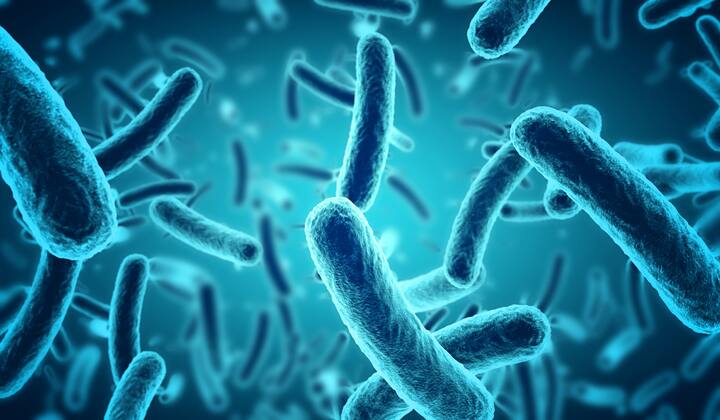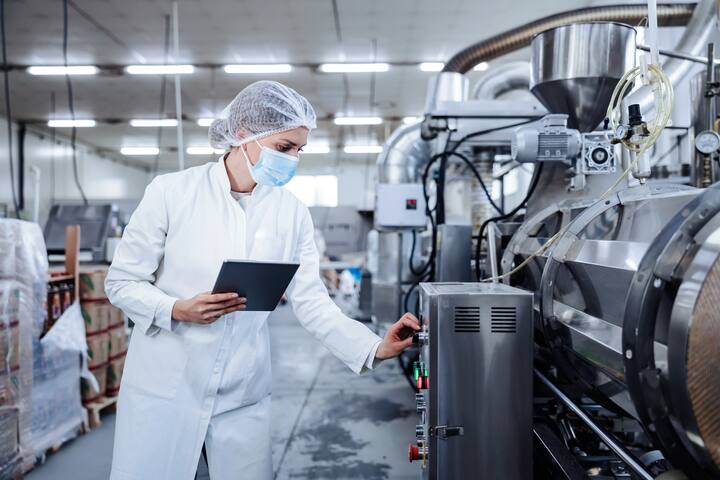
Environmental monitoring of Listeria monocytogenes
23 January 2025
Environmental monitoring of Listeria monocytogenes
This is a premium article. Premium articles are part of the Normec Foodcare Knowledge Centre subscription. All knowledge and experience from every area of expertise is brought together in the Knowledge Base. Here you will find all relevant information about various product groups and legislation. Curious? Read what the Normec Foodcare Knowledge Centre can offer you.
Testing the production environment for the presence of Listeria monocytogenes is a requirement for many food companies. At the same time, it is quite complicated to draw up a monitoring plan. In this article, we describe what you need to pay attention to.
The purpose of environmental testing
Sometimes companies are reluctant to carry out environmental testing for Listeria monocytogenes. The idea is that if the pathogen is found, there is an immediate problem, which is why some companies prefer to test the environment less often rather than more often. However, this is not the right approach. The purpose of environmental monitoring is precisely to find the bacteria and thus prevent problems with your products.
As a company, you want to know where Listeria monocytogenes is present in the factory and where this pathogen is accumulating. If the bacteria is present in the factory, it can be spread by water, materials or people, for example, and potentially contaminate products. Based on information obtained from environmental monitoring, the company can take or tighten measures to prevent product contamination. So, by detecting Listeria monocytogenes, you can take targeted action to prevent it from becoming an issue.
Drawing up an analysis programme
The aim is therefore to detect Listeria monocytogenes, if present in your company. How do you go about this? Before drawing up the monitoring programme, first determine the risk associated with the activities. The risk for the process is related, for example, to the nature of the process: dry or wet process, with open or closed products. A dry process with closed products carries a lower risk of introduction and contamination.
Next, identify risk zones within the factory based on the level of risk of product contamination. The most high-risk zone is often where unpackaged end products are present that do not undergo further processing that would kill Listeria monocytogenes. Is there a CCP (Critical Control Point) that kills Listeria monocytogenes in the product? If so, the area for the CCP is probably not high risk. However, it can be assessed as high risk if employees can transfer Listeria monocytogenes to areas with cooked products via their shoes or materials. Therefore, be critical when determining the risk classification.

Next, determine which points will be sampled. Choose both points that come into direct contact with products and points that do not. Here too, choose points based on risk. Consider, for example, surfaces or materials that can spread Listeria monocytogenes throughout the factory, such as the shoe brush strip (the step after the brush strip), the shoes themselves or cleaning materials. It is also important not to always take samples from the same place, but to rotate them in order to obtain a more complete picture of the presence of the pathogen in the production environment.
When and how often in the Netherlands
In Information Sheet 85 (Handbook of Food Microbiology), the NVWA describes as a starting point for environmental monitoring that at least 10 relevant samples must be taken at least four times a year. This number is considered a minimum. Depending on the identified risk, more samples must be taken more frequently. In addition, areas with the highest risk must be sampled more frequently than areas with a lower risk.If you take samples immediately after cleaning, you are checking the effectiveness of the cleaning. This is not in line with the purpose of environmental monitoring. It is best to take samples during (preferably at least two hours after the start of production) or immediately after production. This allows you to investigate the effect or extent of the process on the presence of Listeria monocytogenes in the environment.
When and how often in Belgium
Self-checking module GM4 describes the requirements for environmental monitoring in Belgium. This module states that, in addition to the risk of Listeria monocytogenes, other environmental pathogens must also be assessed. Based on a risk analysis, product environments must be classified into risk zones. More samples must be taken in high-risk zones than in low-risk zones. A distinction is also made between direct contact points and points where direct contact with food is not possible. Both the frequency of sampling and the number of samples taken and the choice of which contact points should or should not be sampled must be substantiated by a risk analysis. The module indicates which parameters must be included in this risk analysis. Furthermore, it specifically requests that samples also be taken before cleaning can take place in order to obtain an idea of the possible presence of pathogens in the environment. It is also recommended that genotyping be carried out if pathogens are present. This makes it easier to carry out a cause analysis for positive samples. Targeted actions can also be taken.
Analysis plan is only a verification
One of the basic requirements for food safety and the prevention of pathogen growth is good hygiene practices. Product and environmental monitoring should be seen as a verification, a check of the hygiene measures taken. Performing analyses is not a control measure in itself, and a monitoring plan alone cannot guarantee that the risk of Listeria monocytogenes is controlled.